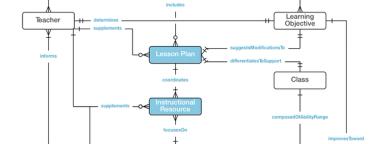
What's It Like to Work with an Information Architect?
In the short post “What is Information Architecture?” I note that “information architects collaborate in the creation of information environments for shared human use.” If you’re new to IA as a practice, this definition also gives us a useful set of touchpoints to discuss what working with an information architect looks like.
Information Architects Collaborate
When you engage an information architect to help with your information design, you should expect them to want to talk with and interact with your users, stakeholders, subject matter experts, and developers. They’ll do this because until they learn about your users, content, and context, they actually don’t know what the right solution is for your information environment.
An information architect will most likely conduct interviews, facilitate workshops, analyze content, review existing research, and run card sorts and tree tests. They’ll then spend time thinking about how it all fits together in order to better understand both what your users are doing now (for better or worse), and what your organization wants them to do (or not do) in the future.
The Creation of Information Environments
The formal definition of an interface is “a surface lying between two portions of matter or space, and forming their common boundary” (yes, I went to the OED for that). Though we rarely get this formal when we talk about digital tools like websites and apps, the definition fits: in these cases, the two entities whose edges meet at the common boundary of the interface are the human user, and the digital and physical systems that receive input and store, manipulate, and serve content.
An information architect works to understand both sides of the interface to ensure that the information environment created at this boundary serves both user and business goals, and can be supported by the technology. This means they’ll take into consideration, for example, not only the navigation and information hierarchy on a website, but also the taxonomies, metadata schemes, and application logic that sit just on the other side of the glass (or the speaker, or the tangible interface).
Shared Human Use
Effective design serves an explicit purpose for an intended audience. For those who are not designers, adopting a mindset of creating for shared use can be challenging. An information architect, like their UX designer and content strategy colleagues, will draw on research insight, broad knowledge of best practices for the design of shared information environments, and iterative modeling, testing, and improvement to arrive at an information design recommendation based on agreed upon purposes and intended outcomes. This helps to ensure that the final design responds to the documented needs and goals of a broad base of users—not the idiosyncratic preferences of the design’s creators.
All this said, it is unlikely any two information architects will approach an information design problem in exactly the same way. There are almost always several perfectly effective methods for arriving at a desired insight or outcome. Whichever methods they choose, however, an information architect will focus on understanding the systematic dynamics of a shared information space, and ensuring that that system is structured to function in a way that meets user and business goals.
There are some questions that never fail to come up when I endeavor to explain what it is that I actually do as an information architect. This series of short posts offers my spin on some of the more common of those questions. Read the previous post here.